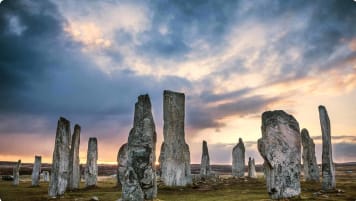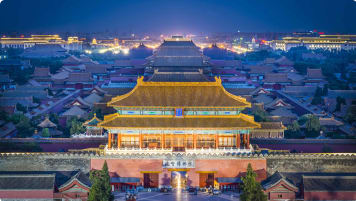Silk Road Explorers - "Imperialist Villains"
The Silk Road on the most famous overland trade routes from Asia to the markets of Alexandria and onto Venice. Article for mature and senior couples and solo travelers interested joining a small group tour starting in Xian through to Uzbekistan.
14 Dec 20 · 9 mins read
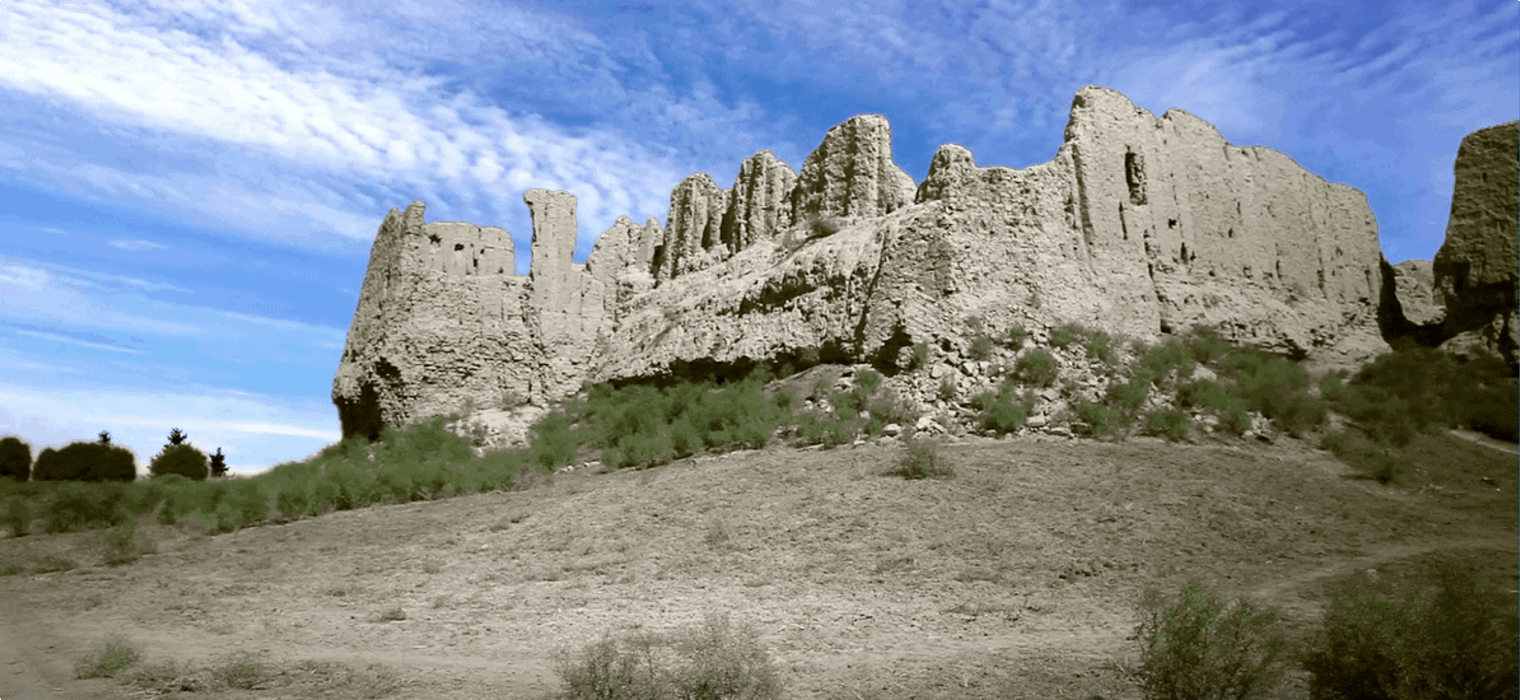
Silk Road Explorers – “Imperialist Villains”
The Silk Road, extensive trade routes that once connected the East and the West, fell into decline in the 15th century due to several factors, among them the drying up and eventual abandonment of the oasis towns that grew prosperous from the Silk Road trade. (You may read about the history and legacy of the Silk Road in this article.)
Originating at the city of Chang’an (located near modern-day Xi’an) in China, the Silk Road ran along the foothills of the Tianshan and Kunlun mountains bordering the Taklamakan Desert in modern-day China’s Xinjiang Uyghur Autonomous Region. The cities and towns on the Silk Road’s path would have remained buried in sand, if not for a fortuitous purchase of an old manuscript in Xinjiang.
In 1890, Captain H. Bower of the British Indian Army purchased an old manuscript in the Tarim Basin, a vast depression in the Xinjiang region. The manuscript (later named the Bower Manuscript) turned out to be an ancient document dating back to the 5th century. This discovery in a region of China once believed to be nothing but an inhospitable desert ignited the West’s interest, with many countries sending out expeditions in the “Great Game”–an archaeological race to unearth treasures from Central Asia’s antiquity.

These explorers were hailed in the West as heroes who rescued and preserved the lost treasures of the Silk Road, but from China’s perspective they were “imperialist villain[s]” and thieves who robbed the Chinese of their own history. Even the biography of pioneering Silk Road explorer, Sven Hedin, published on the Sven Hedin Foundation’s website, acknowledges this difference in historical attitudes: “Sven Hedin was a person who evoked and still evokes many different memories and feelings, who has been subjected to many admiring as well as highly critical comments. The contents of these comments all depend on which periods of his life and which of his activities they refer to, during which times and contexts and by whom they have been passed, and even in which country they have been voiced.”

This article will focus on four explorers who journeyed from the West to scour the Silk Road for ancient treasures:
- Sven Hedin (Sweden)
- Aurel Stein (United Kingdom)
- Albert Von Le Coq (Germany)
- Langdon Warner (United States)
Peter Hopkirk’s Foreign Devils on the Silk Road: The Search for the Lost Treasures of Central Asia, first published in 1980 (and re-issued as a paperback in 2006 and 2016), is a good resource for those who want to read more about this late 19th to 20th-century archaeological race. Other references are linked here throughout this post.
Sven Hedin
This ancient system of routes got its (rather misleading) name fairly recently: German scholar Ferdinand von Richthofen coined the term in 1877 to describe the trade routes, calling them Seidenstrasse (“silk road”). The Silk Road, which conveyed not only silk but other products, peoples, and ideas, was officially established during the rule of the Han Dynasty, the longest-ruling dynasty in China. The Han Dynasty is credited for various cultural achievements and for establishing a heritage that is thereafter considered uniquely Chinese.
Before the Swedish explorer Sven Anders Hedin mapped Xinjiang and Tibet in the 1890s, these parts of central Asia were unknown and unexplored (terra incognita). As a child, Hedin was a great admirer of Sweden’s Arctic explorers, particularly Adolf Erik Nordenskiöld, whom he watched return triumphantly from the Northeast passage in 1880. However, he did not end up going to the cold Arctic, but instead travelled east to the hot deserts of Asia.
Hedin worked as a tutor in Baku, Azerbaijan and travelled extensively through Persia (Iran). Upon his return, he enrolled in the University of Stockholm and underwent formal training in geology, physics, and zoology (Hopkirk, 2016, p. 56) to aid his future expeditions. He next enrolled in Berlin University to study geography under Richthofen, one of the foremost experts of the geography of China at the time (and the one who coined the term, “Silk Road”).
Hedin was appointed as an interpreter for the Swedish-Norwegian mission to the Shah of Iran in 1890, and in the following years visited Russian Turkestan and crossed the Urals to Beijing, the Pamir range, and Lop Nor (Lop Lake) in western China.
His February 1895 expedition into the Taklamakan desert, where he and his men experienced days without access to water, proved to succeeding explorers, especially Aurel Stein, that it was possible (albeit extremely dangerous) to cross the desert instead of skirting around it (p. 56). The Taklamakan is bounded by high mountain ranges–the Kunlun Mountains to the south, the Pamir Mountains and Tian Shan to the west and north–and the Gobi Desert to the east. Temperatures in the sandy desert often swing to the extreme: −20 °C (−4 °F) in winter, and up to 40 °C (104 °F) in summer.
Hedin brought back relics, some he excavated and others he picked up from the natives, who would find the artefacts washed out by the flood caused by melting snow in the summer (p. 61). The Museum of Ethnography in Stockholm, Sweden owns or controls his ethnographic and archaeological collections.
Hedin wrote about his travels and published maps of these “lost cities”, and by 1897 he was already a well-respected explorer. He was read by academics and scholars interested in Asia. One of these scholars was the Hungarian-British archaeologist Aurel Stein.
Aurel Stein
Sir Marc Aurel Stein was born in Budapest in 1862 and set out for India following his education. From 1888 onwards he carved out a career as an academic, serving as registrar of Punjab University, principal of the Oriental College, Lahore, and principal of the Calcutta Madrasah. Stein adopted British nationality in 1904, and his expeditions into China were largely funded by the British and Indian governments.
Inspired by Hedin’s writings, particularly his book Through Asia (1898), Stein led three expeditions in 1900, 1906, and 1913 into Xinjiang, covering more than 40,000 kilometres on foot or camel-back. According to Esteban Morin in an article published by the British Museum, Stein might have also used the Swedish Hedin’s popularity to “[stir] the pot of nationalistic rivalry” and “push the British authorities to entrust him with the resources he needed.”
Stein made meticulous notes of his discoveries, the most famous (and infamous) of which was the Library Cave in the Mogao Caves or the “Caves of the Thousand Buddhas” near Tun-huang (also spelled Dunhuang), a rock temple complex containing paintings, sculptures, temple banners, and ancient manuscripts. The Mogao Caves are now a World Heritage Site.
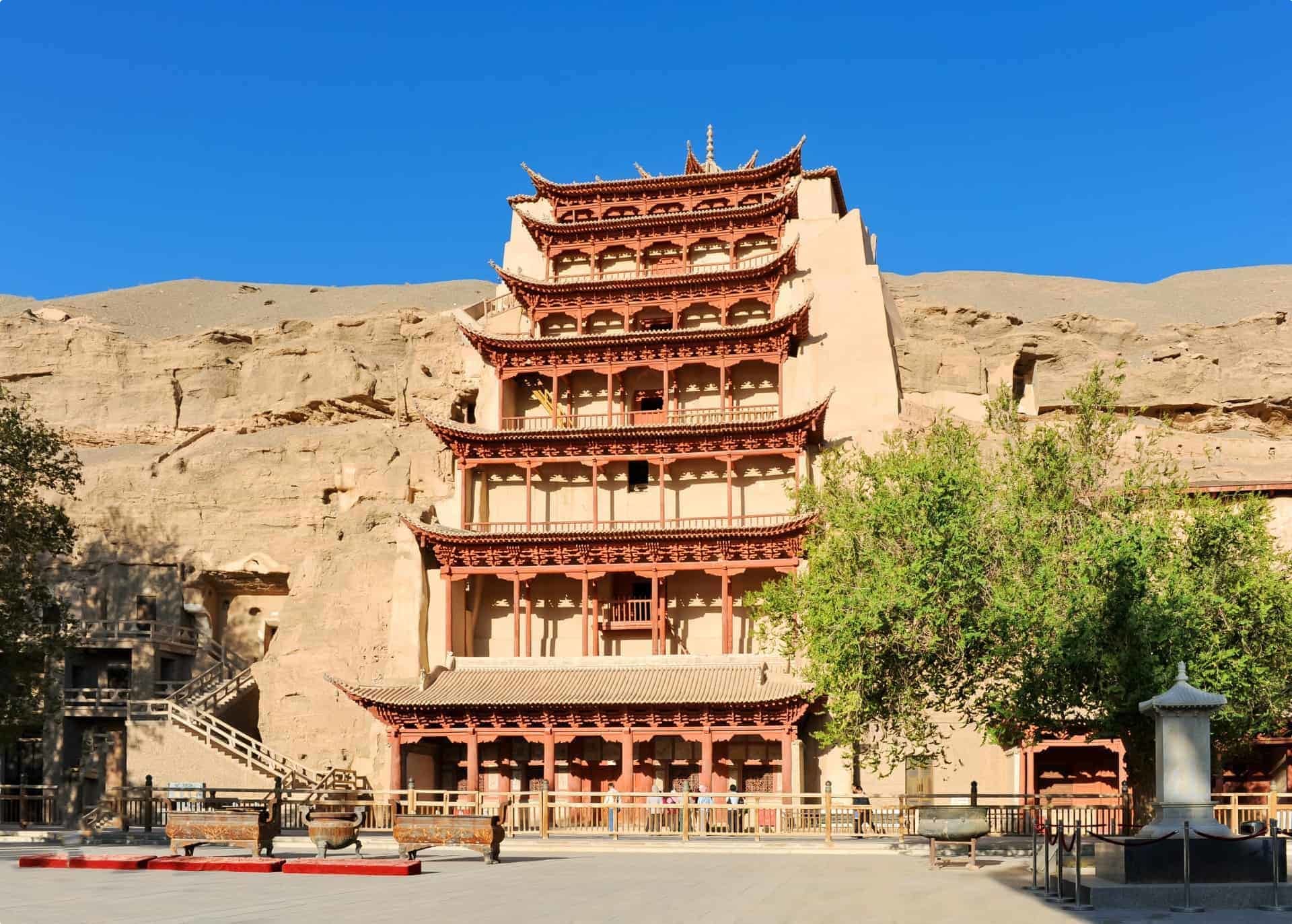
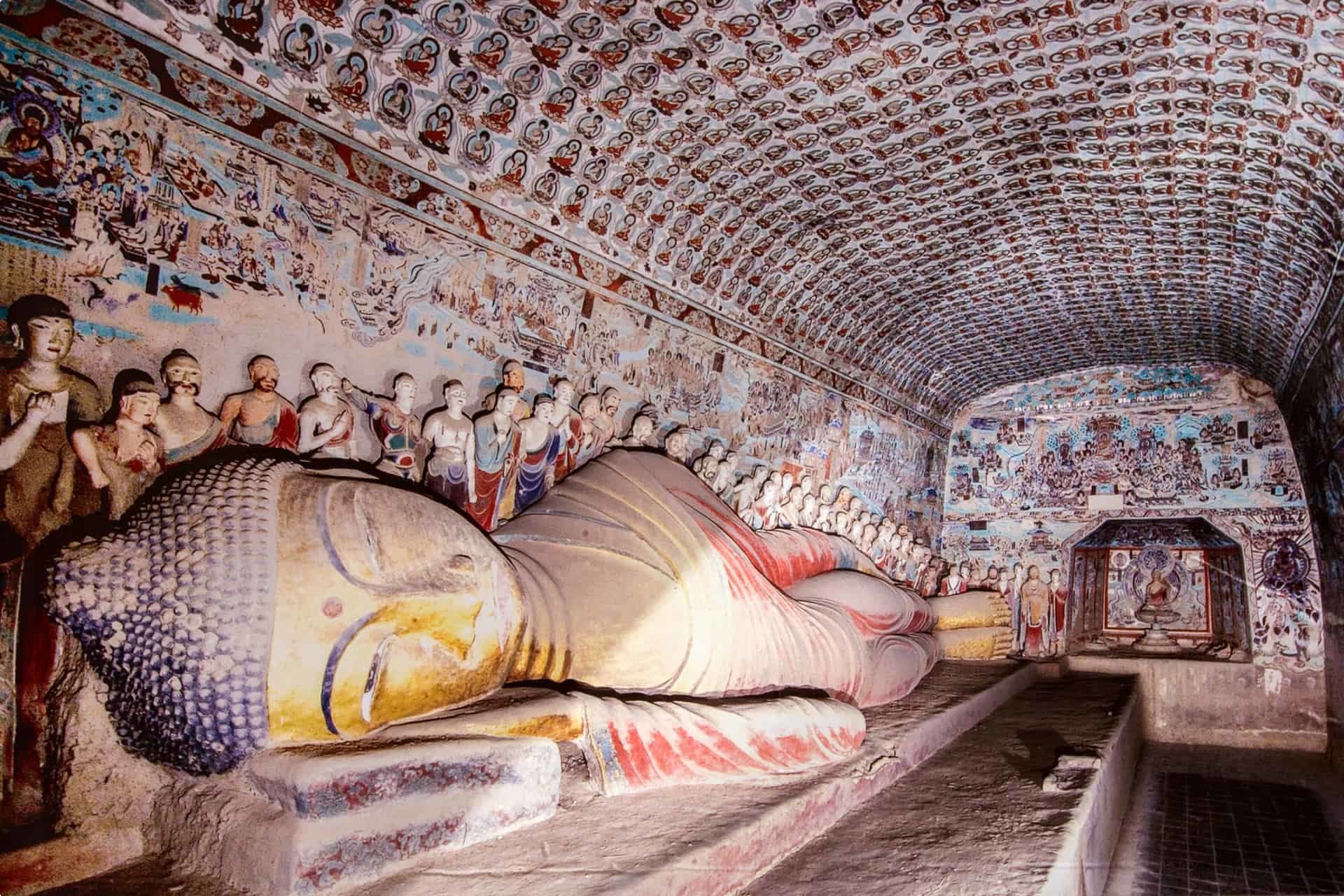
According to Hopkirk, the town of Tun-huang served as the last caravan stop in China proper for travellers going on the Silk Road. They prayed at the shrines for safety, and those arriving from the West prayed there to give thanks for a safe journey (p.156). It was also a site of pilgrimage for Buddhists. The removal of materials from the caves, Hopkirk writes, “is something that the Chinese can never forgive” as it was tantamount to “the loss of the written evidence of their past” (p. 6).
In his Ruins of Desert Cathay, Stein himself wrote, “Would the resident priests be sufficiently good-natured—and mindful of material interests—to close their eyes to the removal of any sacred objects?” This shows that he knew that the caves were not abandoned, and that he knowingly removed objects from a temple still in use by Buddhist pilgrims.
A Chinese Taoist monk named Wang Yuanlu discovered the hidden Library Cave filled with tens of thousands of ancient manuscripts in 1900. Wang reported the discovery to local officials, who recognised the materials’ immense cultural value and told the monk to restore them where they were found. In 1907, Stein met with Wang, promising a donation, and persuaded the monk to sell around 10,000 documents and paintings for a pittance. Stein wrote to a friend: “For the present the new acquisition travels in huge bags, disguised as well as we could manage…all which the ‘Thousand Buddhas’ yielded has cost the Government only some £ 130.”
Stein was knighted for this “discovery”. He would soon be followed by a Frenchman, Paul Pelliott, and the Japanese and the Russians, who carted off more treasures from the caves.
The treasures Stein brought back from his expeditions were divided between four institutions: The V&A, The British Museum, The British Library (all in London, UK), and The National Museum in New Delhi, India.

Again in Ruins of Desert Cathay, Stein wrote, “I had recognised long before that it was my duty towards research to try my utmost to rescue, if possible, the whole of the collection from the risk of slow dispersion and loss with which it was threatened in such keeping…I was performing a pious act in rescuing for Western scholarship those relics of ancient Buddhist literature and art which local ignorance would allow to lie here neglected or to be lost in the end.”
This argument–that the explorations aimed to preserve artefacts that would end up destroyed anyway by the elements or, as Stein put rather indelicately, “local ignorance”–would be voiced by the explorers that would follow Stein into Central Asia.
Albert von Le Coq
Unlike the previous explorers, the German Von Le Coq got his start in the Central Asian explorations later in life, due mainly to an obligation to the family business. Born in 1860 in Berlin and descended from a family of French Huguenots, Von Le Coq was heir to a vast fortune derived from wineries and breweries in Central and Eastern Europe. He studied in London and the United States before returning to Germany at the age of 27 to become a partner in the family business.
When his father died in 1900, Von Le Coq, then 40 years old, sold the business and studied Oriental Languages at Berlin University. He later started working as an unpaid researcher at the Berlin Ethnological Museum. It seems that, with the family business sold, Von Le Coq now has the time (and certainly the means) to pursue his true passion: studying the East.
He started joining the expeditions to the Bezeklik Caves in Turfan in the northern arm of the Silk Road (Hopkirk, 2016, p. 112) in 1904, serving as leader of the second of four expeditions under the banner of the Berlin Ethnological Museum. (The first expedition was led by his mentor, who would again lead the third expedition.)
Von Le Coq’s expeditions filled nearly 400 crates with paintings, murals, and text fragments, all shipped back to Berlin.
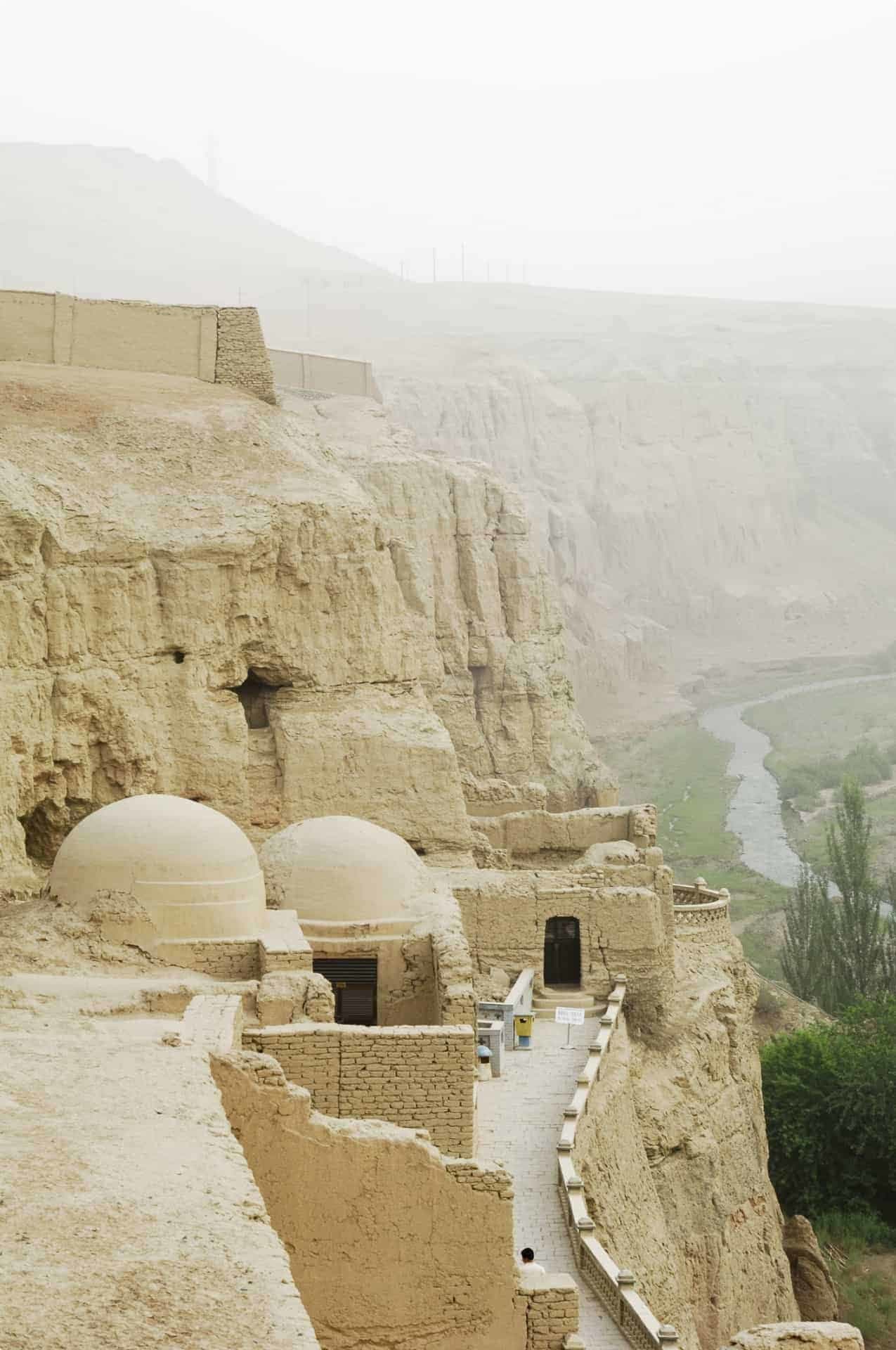
Since 1992, the whole collection has been held at the Berlin-Brandenburgische Akademie der Wissenschaften (BBAW; Berlin Brandenburg Academy of Sciences and Humanities). In his book Buried Treasures of Chinese Turkestan (1928), Von Le Coq defended the expeditions as necessary to save the Silk Road relics from destruction. Ironically, the collection was originally kept in the Berlin Ethnological Museum, which was bombed several times during World War II. Hopkirk wrote that during the war, “more masterpieces of Central Asian art were wiped out in Berlin than tomb-robbers…or earthquakes could have accounted for in many years. (p. 5)”
Langdon Warner
Langdon Warner, Harvard professor and Fogg Museum curator, led the first American expedition to Central Asia in 1923. Like Stein, Warner also went to Tun-huang and “sliced 26 murals” from the cave walls. One of these is the centre of a mural depicting the ferrying of the statue of the Buddha from the cave, now in the Sackler Collection at the Harvard Art Museums.
Holland Cutter, writing for The New York Times, describes that “you can still see the ghost-outlines of figures where [Warner] lifted off the thin plaster sheets.”
Warner defended his actions, saying in 1940 that “the love and labour and the dollars we spent on assembling them should silence all criticism. That in itself is more service to the cause of China bigger than anyone else in this country has even made.”
An End to the Expeditions
In the 1930s, Hedin led his last expedition, a Chinese-Swedish scientific expedition where, in accordance with a joint agreement, the archaeological finds that were brought for analysis to Sweden were repatriated back to China. These collections are now in the National Historic Museum in Beijing.
Stein, 67 years old and already retired, managed to return to China for one final expedition on behalf of Harvard’s Fogg Museum in 1930. He returned in place of Warner, who by then was already a persona non grata in China (Hopkirk, 2016, p. 225).
Stein would suffer the same fate. Chinese scholars and the local press called for the cancellation of his visa and his expulsion, and after seven months, Stein was forced to leave Central Asia for good (Hopkirk, 2016, p. 226). This spelled the end of the unchecked, free-for-all archaeological expeditions in Central Asia.
In 1944, a band of young Chinese scholars formed the Dunhuang Research Institute, now the Dunhuang Academy, to take control of the caves that had been the site of so much plundering during the so-called Great Game. In 2010, the Dunhuang Foundation was founded, committed to “preserving Dunhuang’s past and providing for its future.”
If you want to learn more about the Silk Road, do join Odyssey Traveller’s 29-day Silk Road tour which begins in Xi’an (China) and ends in Tashkent (Uzbekistan). This fully escorted, small group tour is designed for the active senior traveller and takes participants to the oasis towns and archaeological sites on this ancient trade route. In addition to Hopkirk’s book, Foreign Devils on the Silk Road, the tour page also lists other Silk Road references that may be of interest. Click through to check the itinerary and sign up!
About Odyssey Traveller

Odyssey Traveller is committed to charitable activities that support the environment and cultural development of Australian and New Zealand communities. We specialise in educational small group tours for seniors, typically groups between six to 15 people, and no more than 18 travellers. Odyssey has been offering this style of adventure and educational programs since 1983.
We are also pleased to announce that since 2012, Odyssey has been awarding $10,000 Equity & Merit Cash Scholarships each year. We award scholarships on the basis of academic performance and demonstrated financial need. We award at least one scholarship per year. We’re supported through our educational travel programs, and your participation helps Odyssey achieve its goals.
For more information on Odyssey Traveller and our educational small group tours, visit our website. Alternatively, please call or send an email. We’d love to hear from you!
Related Tours
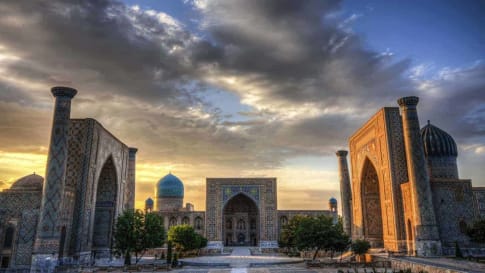
29 days
Aug, May, SepTravel on the Silk Road with Odyssey Traveller | Small Group Tour for Seniors
Visiting China, Kyrgyzstan
The Silk Road is an ancient trade route linking China and Imperial Rome through Central Asia. Few areas in the world remain as unexplored or offer such richness in terms of ancient and modern history, culture, and scenic diversity as Central Asia. Our Small group Silk road tours itinerary explores the Road through remote deserts and mountainous environments as we visit key sites between Xi'an and Bukhara.
From A$19,685 AUD
View Tour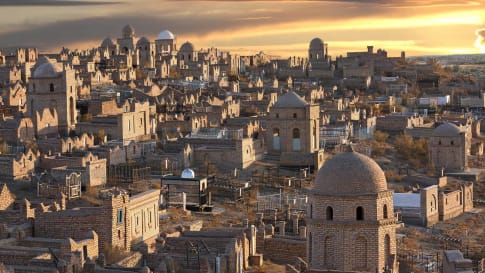
28 days
May, AugThe Stans Small Group Tour: Uzbekistan, Kazakhstan, Kyrgyzstan, and Turkmenistan
Visiting Kazakhstan, Kyrgyzstan
This journey is crafted for the adventurous traveller—whether solo or as a couple—seeking a small group tour through Central Asia. Be prepared for a variety of accommodations, scenic walking excursions, and a few full travel days. The itinerary blends stunning landscapes, a mix of ancient and modern history, as well as authentic encounters with local families and dramatically different ways of life.
From A$17,650 AUD
View Tour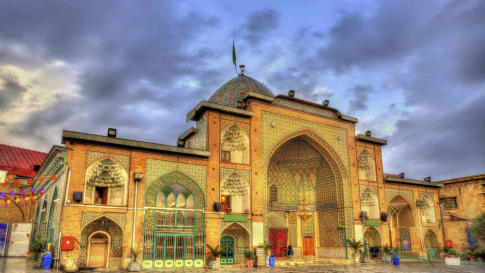
17 days
Sep, Nov, AprIran Culture and History Escorted Small Group Tour for seniors
Visiting Iran
Unlike its neighbours to the west and northwest, Iran had not adopted Christianity and it was the explosive spread of Islam and its ready adoption, without the Arabic language or customs, which helped unite the culture and greatly enrich Persian heritage. This small group tour program includes the great cities of Iran, historic sites, mosques, gardens, bazaars and teahouses for couples and solo travellers.
From A$11,825 AUD
View TourArticles of curiosity
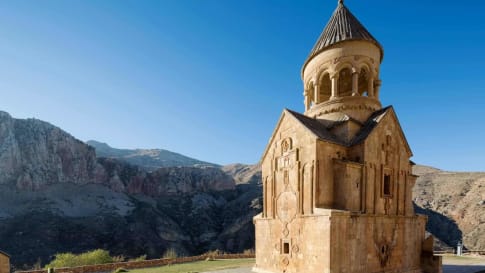
Armenia's Religious Architecture: The Definitive Guide
Buildings and Christianity in Armenia | Small Group Tours Armenia In this post, we will look at examples of Armenia’s buildings and building design before and after its conversion to Christianity. These buildings represent some…
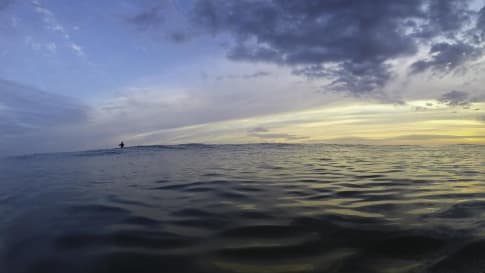
Atlantic Ocean and How it Shaped Ancient Communities In Europe
Article of interest for senior couples and mature solo travellers joining a small group European tour to Faroe Islands, Scottish Isles, Morocco or Portugal. Focus is on the early exploration of the Atlantic.
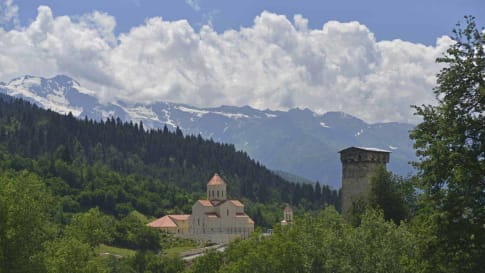
Clothes began in Georgia | History of clothing
For small group tour of mature and senior travellers touring Europe, this article provides an insight into the origin of textiles and fabric from Georgia in the Caucasus, to the Roman Empire and Southern Italy and Rome through to the industrial revolution of Britain.

Discovering Medieval Chester: A Thriving Trade Centre
Article about Chester, England for small group educational tours for senior couple and mature solo travellers to England. Articles to support your travel plans to explore England, Scotland, Wales and Ireland.
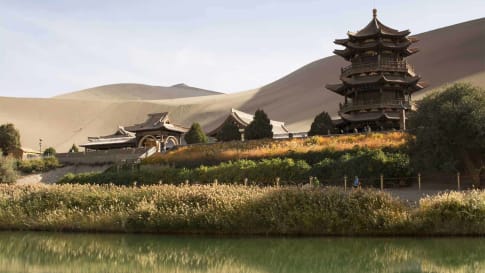
History and Legacy of the Silk Road route
The Legacy of the Silk road is outlined in this short definitive article for mature age travellers planning to take a small group tour along through these 3 countries over 29 days. The program is designed for mature couples and solo travellers.
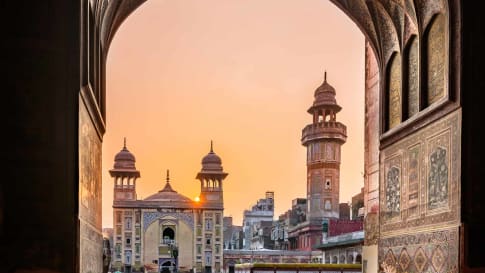
History of Pakistan
Pakistan, a young nation created with the partition of British India in 1947, is intertwined with the history of India and the broader Indian subcontinent.
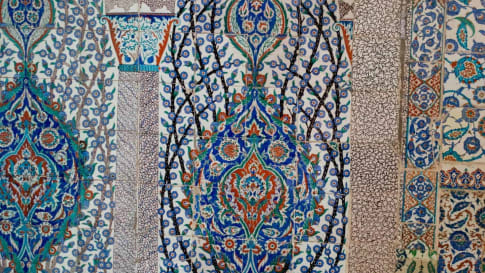
Ottoman Empire: The Definitive Guide for Travellers
The Ottoman Empire, c. 14th-20th centuries | Small group history tours Turkey The Ottoman Empire once extended from Iraq to North Africa, from Arabia to the Balkans, even pressing to the walls of Hapsburg Vienna…

Textiles through History: The Definitive Guide for Travellers
Weaving textiles throughout history and the advancement of society Fabric and textiles industry has a long and coloured past. While it is estimated that fabrics were used in the time of the Stone Age, nearly…

Turkmenistan; journey for the curious
Turkmenistan: a journey for the curious Brimming with a vibrant population of around 5 million people, Turkmenistan is hospitable and welcoming to tourists, despite its history of political problems. Its vast landscape is mostly desert,…
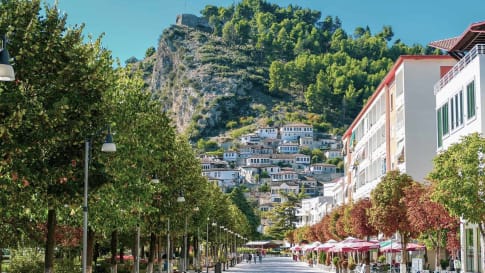
Uncovering Albania: The Definitive Guide
Uncovering Albanian History Albania sits on the Ionian and Adriatic Seas in southern Europe, bounded by Montenegro, Kosovo, Macedonia, and Greece. This small and mountainous country in the Balkan peninsula had roots in ancient Illyria,…
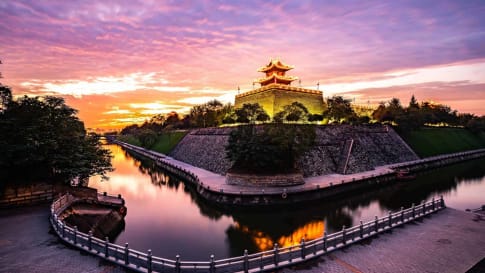
Xi'an, the Beginning of the Silk Road: Definitive Guide for Travellers
Xi’an, the Beginning of the Silk Road The bustling city of Xi’an (“Western Peace”) in China‘s Shaanxi Province is one of China’s oldest cities and perhaps also its most culturally significant: as the ancient city…

Aboriginal history and culture of Kakadu National Park, Northern Territory
For those seek to learn as they travel then the history of the Aboriginal journey and timelines that unfold as a discovery in Australia seek to fascinate the mature and senior traveller on a small group package tour for couples and singles. From Darwin, this tour also visits Arnhem land as well as Kakadu, during the dry season.

Ancient Aboriginal trade routes of Australia
Ancient Aboriginal trade routes of Australia Trade was a central part of life for Aboriginal people prior to the British settlement of Australia. Trading routes criss-crossed the nation, dispersing goods, information, technologies and culture thousands…
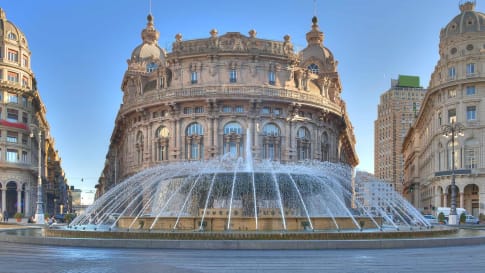
History of Genoa, Rival to Venice
In this article, we will look at the history of Genoa, and its rivalry with Venice that led to several wars fought between the two city-states in the 12th to 14th centuries.
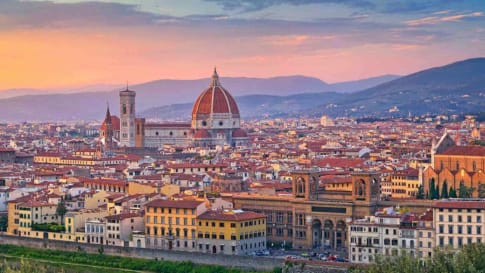
History of a City: Florence, Italy
Florence or Firenze, article provides an overview of the history from inception from the Romans to Mussolini with plenty of the Renaissance covered. Includes a list of Museums and places to see in Tuscany. Background material for a small group package tour to Italy or long stay in Florence.
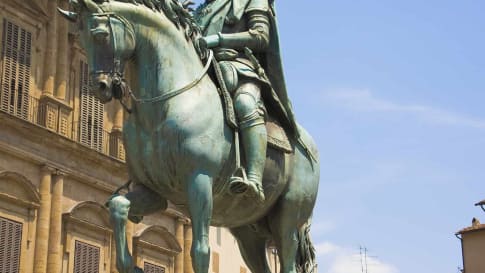
The Rise of the House of Medici
The House of Medici was an Italian banking family and political dynasty that de facto ruled the city of Florence during much of the Italian Renaissance.

Venice and the History of Maps
Venetian Maps and How they Ruled the World ‘Venice was always a frontier,’ Peter Ackroyd (2009) declares in Venice: Pure City. ‘When the empire was divided in the time of Charlemagne, the lagoons of Venice…
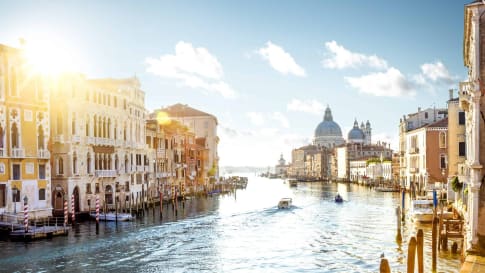
Venice, Italy
Explore the sights and wonders of Venice, 'La Serenissima'. A medieval powerhouse, with its stunning architecture, iconic canals, waterways and gondolas. Odyssey offers small group tours for mature and senior travellers couples and solo travelers to Venice and Italy.
